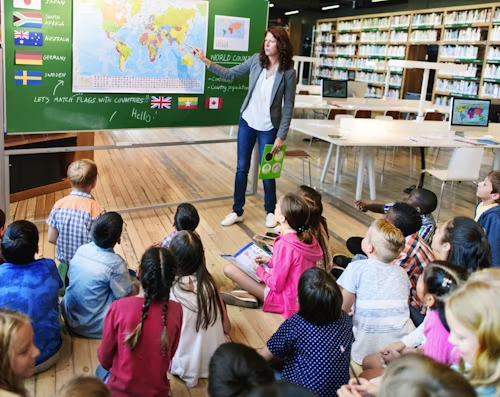
Motivation: The Integration for Immigrant Children into Schools in Europe Integration of Immigrant Children into Schools in Europe course aims to address the challenges faced by immigrant children in European schools and promote effective strategies for their successful integration. This course recognizes the importance of inclusive education and aims to equip educators and professionals with the necessary knowledge and skills to support immigrant children in their educational journey.
Course Description: This 7-day training course provides a comprehensive understanding of the integration process for immigrant children in European schools. Through a combination of lectures, workshops, and seminars, participants will explore various aspects of integration, including cultural diversity, language acquisition, social inclusion, and educational support.
Teaching Method: The course employs a participatory and interactive teaching approach, combining theoretical knowledge with practical applications. Participants will engage in discussions, group activities, case studies, and collaborative projects to enhance their learning experience. The course will also include guest lectures and seminars delivered by experts from the academic sector.
Course Objectives:
- Understand the challenges faced by immigrant children in European schools and the importance of their successful integration.
- Explore strategies to create inclusive learning environments that embrace cultural diversity.
- Learn effective approaches for supporting language acquisition and development among immigrant children.
- Discover methods to promote social inclusion and foster positive relationships among students.
- Gain knowledge of educational support systems and resources available for immigrant children.
- Develop skills to assess and address the specific needs of immigrant children in the classroom.
- Formulate action plans and strategies for implementing integration initiatives in schools.
Course Schedule:
Day 1: Introduction to Integration and Inclusive Education
- Overview of the course objectives, structure, and expectations
- Understanding the concept of integration and its importance in education
- Exploring the benefits of inclusive education for immigrant children
Day 2: Cultural Diversity and Intercultural Communication
- Recognizing and appreciating cultural diversity in the classroom
- Strategies for promoting intercultural communication and understanding
- Addressing cultural stereotypes and biases
Day 3: Language Acquisition and Development
- Understanding the challenges of language acquisition for immigrant children
- Effective strategies for supporting language development in the classroom
- Collaborative language learning activities and resources
Day 4: Social Inclusion and Peer Relationships

- Promoting social inclusion and acceptance among students
- Strategies for building positive peer relationships and reducing discrimination
- Creating a supportive and inclusive classroom environment
Day 5: Educational Support Systems and Resources
- Introduction to educational support systems available for immigrant children
- Exploring community resources and organizations for additional support
- Identifying and utilizing appropriate educational tools and technologies
Day 6: Seminars with Expert Speakers
- Guest lectures and seminars by experts in the field of immigrant integration
- Topics may include policy frameworks, research findings, best practices, etc.
Day 7: Action Planning and Implementation
- Reflection on the course content and discussions
- Developing action plans for implementing integration initiatives in participants’ schools or organizations
- Sharing of ideas, resources, and strategies among participants
Future Developments and Risks: Looking ahead, it is crucial for governments to recognize the significance of integrating immigrant children into schools and allocate adequate resources and support. Failure to address these issues may lead to various risks, including:
- Social exclusion and marginalization of immigrant children, impacting their educational outcomes and overall well-being.
- Increased cultural and linguistic barriers, hindering the integration process and creating segregated educational environments.
- Inequality and disparities in educational opportunities, perpetuating social and economic inequalities.
- Missed opportunities for intercultural learning and fostering a diverse and inclusive society.
To mitigate these risks and promote positive future developments, it is essential for governments to revise and strengthen guidelines for immigrant integration, allocate funding for training programs like this one, and foster collaboration between schools, communities, and support organizations to ensure the successful integration of immigrant children into European schools.
